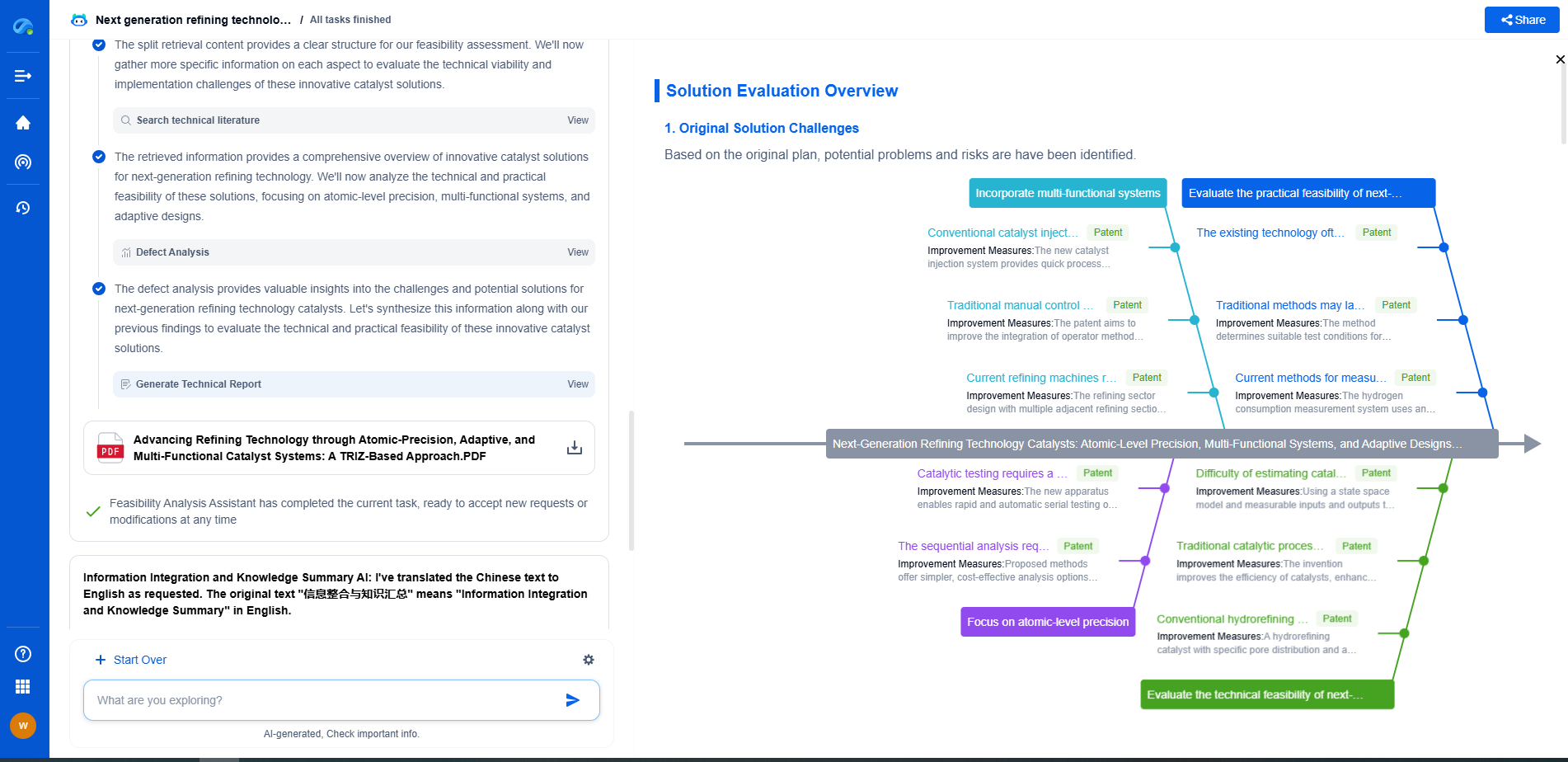How robots are enabling autonomous laboratory automation
JUN 26, 2025 |
In the fast-paced world of scientific research, efficiency and precision are paramount. This has led to an increasing interest in laboratory automation, which leverages advanced technologies to streamline workflows. At the heart of this revolution are robots, which are transforming how laboratories operate by enabling autonomous laboratory automation. This shift is not just about enhancing productivity; it's about redefining the scope and scale of what is scientifically possible.
The Role of Robots in Modern Laboratories
Robots in laboratories are designed to perform a wide array of tasks that are typically tedious and time-consuming for human workers. These tasks include sample handling, data collection, and analysis, which are fundamental to many scientific endeavors. By integrating robots into these processes, laboratories can operate continuously without the limitations of human fatigue, thereby increasing throughput and reducing the time needed for experiments.
Enhancing Precision and Reducing Errors
One of the most significant advantages of using robots in laboratories is their ability to perform tasks with high precision and repeatability. Human error, a common issue in manual laboratory work, is significantly minimized, leading to more reliable and accurate results. For example, in pharmaceutical research, where precise measurements are crucial, robotic systems can ensure that the exact quantities of substances are used, thereby enhancing the reliability of experimental outcomes.
Scalability and Flexibility in Research
Robots offer unmatched scalability and flexibility in laboratory settings. They can be easily reprogrammed or reconfigured to handle different tasks, making them ideal for labs that deal with a variety of experiments. This adaptability allows researchers to scale up their operations quickly when needed, such as during high-demand periods or when expanding research projects. Furthermore, the flexibility of robots enables laboratories to rapidly adjust to new scientific inquiries or changes in research focus.
Integrating Artificial Intelligence with Robotics
The synergy between robotics and artificial intelligence (AI) is driving the next wave of laboratory automation. AI algorithms can process vast amounts of data generated by robotic systems, providing insights that were previously unattainable. This integration allows for predictive analytics, real-time decision-making, and the optimization of laboratory processes. As a result, laboratories can not only automate repetitive tasks but also make informed decisions that guide research directions and methodologies.
Overcoming Challenges and Looking Ahead
Despite the clear benefits, the integration of robots into laboratory environments does come with challenges. These include the initial costs of setting up automated systems, the need for specialized maintenance, and the potential resistance to change from traditional laboratory workers. However, as technology advances and costs decrease, these barriers are gradually diminishing. Looking ahead, the continued evolution of robotics and AI will likely lead to even more sophisticated laboratory automation systems, capable of tackling complex scientific challenges with unprecedented efficiency.
Conclusion
Robots are at the forefront of enabling autonomous laboratory automation, revolutionizing how research is conducted. By increasing efficiency, precision, and scalability, while integrating AI for smarter operations, robots are setting new standards for scientific exploration. As laboratories continue to embrace these technologies, the future of scientific research looks more promising than ever, with robots playing a pivotal role in shaping the discoveries of tomorrow.
Ready to Redefine Your Robotics R&D Workflow?
Whether you're designing next-generation robotic arms, optimizing manipulator kinematics, or mining patent data for innovation insights, Patsnap Eureka, our cutting-edge AI assistant, is built for R&D and IP professionals in high-tech industries, is built to accelerate every step of your journey.
No more getting buried in thousands of documents or wasting time on repetitive technical analysis. Our AI Agent helps R&D and IP teams in high-tech enterprises save hundreds of hours, reduce risk of oversight, and move from concept to prototype faster than ever before.
👉 Experience how AI can revolutionize your robotics innovation cycle. Explore Patsnap Eureka today and see the difference.
- R&D
- Intellectual Property
- Life Sciences
- Materials
- Tech Scout
- Unparalleled Data Quality
- Higher Quality Content
- 60% Fewer Hallucinations
Browse by: Latest US Patents, China's latest patents, Technical Efficacy Thesaurus, Application Domain, Technology Topic, Popular Technical Reports.
© 2025 PatSnap. All rights reserved.Legal|Privacy policy|Modern Slavery Act Transparency Statement|Sitemap|About US| Contact US: help@patsnap.com

